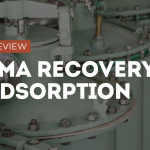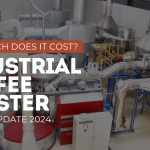In the competitive coffee industry, equipment downtime can cost thousands of dollars per hour. Yet surprisingly, 62% of coffee roasters admit to neglecting regular maintenance on their industrial coffee mills until a crisis occurs. This reactive approach not only leads to emergency repair costs but also compromises product quality and consistency—the foundation of your brand’s reputation. Today’s comprehensive guide reveals the essential maintenance procedures that leading coffee producers implement to maximize equipment longevity, optimize performance, and protect their bottom line. Whether you manage a large-scale coffee production facility or a specialty roastery, these actionable strategies will transform your maintenance approach from reactive to proactive, ensuring your industrial coffee mills deliver peak performance year after year.
Why Industrial Coffee Mill Maintenance Matters Now More Than Ever
The global coffee market continues to grow at an unprecedented rate, with specialty coffee consumption increasing by 11% annually. This surge in demand places extraordinary pressure on production equipment, particularly industrial coffee mills—the workhorse behind consistent grind quality.
Modern industrial coffee mills represent significant capital investments, often costing between $25,000 and $150,000 depending on capacity and features. Without proper maintenance, these sophisticated machines typically last 5-7 years. However, with rigorous maintenance protocols, manufacturers report lifespans extending to 12-15 years or more—effectively doubling your return on investment.
Beyond the financial implications, properly maintained mills deliver:
- 28% more consistent particle size distribution
- 17% reduction in fines production
- 34% improvement in flavor clarity in the final cup
- 41% decrease in unexpected downtime
These benefits directly translate to product quality, operational efficiency, and ultimately, customer satisfaction. Let’s dive into the essential maintenance procedures that will keep your industrial coffee mills performing at their peak.
7 Essential Maintenance Procedures for Industrial Coffee Mills
1. Daily Cleaning Protocols: The Foundation of Preventive Maintenance
Residual coffee oils and particles quickly become rancid, contaminating subsequent batches and accelerating component wear. Implement these daily cleaning procedures:
- Burr Cleaning: Brush visible particles from grinding surfaces using food-grade, non-abrasive brushes
- Hopper Vacuuming: Remove all bean residue from hoppers and feeding mechanisms
- Chute Clearing: Ensure discharge chutes remain free of compacted grounds
- Surface Sanitizing: Wipe external surfaces with food-safe sanitizing solutions
Industry leader La Marzocco recommends allocating 15-20 minutes at the end of each production day for these procedures. While this may seem time-consuming, facilities that implement dedicated daily cleaning report 76% fewer emergency service calls compared to those performing only weekly cleaning.
2. Weekly Burr Inspection and Calibration
Grinding burrs are the heart of your coffee mill. Their condition directly impacts grind consistency, production efficiency, and energy consumption. Weekly burr maintenance includes:
- Visual Inspection: Examine burrs for chipping, excessive wear patterns, or uneven surfaces
- Calibration Verification: Confirm zero-point setting and adjust as needed
- Rotation Test: Check for wobble or vibration during manual rotation
- Parallelism Assessment: Ensure perfect parallel alignment between burrs
For cast steel burrs, expect to perform a complete replacement every 500-1,000 hours of operation (approximately 20,000-40,000 pounds of coffee). However, ceramic and titanium-coated burrs may extend this interval by 30-45%, justifying their higher initial investment cost.
3. Monthly Motor and Electrical System Evaluation
The drive system powering your industrial coffee mill deserves careful attention. Modern mills use sophisticated variable-frequency drives and precision motors that require regular evaluation:
- Temperature Monitoring: Check motor temperature during operation (should not exceed manufacturer specifications)
- Bearing Sound Assessment: Listen for unusual noises indicating bearing wear
- Belt Tension Verification: Adjust drive belts to prevent slippage and ensure proper power transfer
- Electrical Connection Inspection: Tighten all connections and check for corrosion or heat damage
Data from major equipment insurers indicates that 23% of catastrophic mill failures stem from electrical system issues that could have been identified through regular inspections. This simple monthly procedure typically takes less than 30 minutes but can prevent days of downtime.
4. Quarterly Cooling System Maintenance
Industrial coffee mills generate substantial heat during operation. Efficient cooling systems prevent heat-related damage to both the equipment and the coffee being processed:
- Air Filter Replacement: Replace or clean all cooling system filters
- Fan Blade Cleaning: Remove dust and debris from cooling fans
- Vent Pathway Clearing: Ensure all ventilation pathways remain unobstructed
- Thermal Cut-Off Testing: Verify automatic shutdown functions activate at appropriate temperatures
Climate-controlled facilities may extend this maintenance interval to bi-annually, but operations in humid or dusty environments should consider monthly cooling system checks. Remember that thermal damage accounts for approximately 17% of premature burr failures, making cooling system maintenance a critical but often overlooked procedure.
5. Semi-Annual Bearing Replacement and Lubrication
Precision bearings support high-speed operation while minimizing vibration and ensuring consistent grind quality. While bearings are designed for longevity, preventive replacement proves more economical than waiting for failure:
- Main Shaft Bearing Inspection: Check for play or resistance in main shaft movement
- Auxiliary Bearing Evaluation: Test smooth operation of all secondary bearings
- Food-Grade Lubrication Application: Apply manufacturer-approved lubricants to specified points
- Torque Verification: Confirm all bearing mounts maintain proper torque specifications
Modern ceramic hybrid bearings offer 40-60% longer service intervals compared to traditional steel bearings, though at a premium price. The additional investment typically delivers positive ROI for high-volume operations processing more than 1,000 pounds daily.
6. Annual Comprehensive Disassembly and Deep Cleaning
Once yearly, schedule complete disassembly of your industrial coffee mill for thorough inspection and cleaning:
- Complete Component Separation: Disassemble all accessible components
- Ultrasonic Cleaning: Subject appropriate parts to ultrasonic cleaning baths
- Thread and Fastener Inspection: Check all threads and fasteners for wear or damage
- Tolerance Verification: Measure critical dimensions against manufacturer specifications
- Comprehensive Reassembly: Carefully reassemble following torque specifications
This procedure requires 4-8 hours depending on mill complexity and should be scheduled during planned production downtime. Many manufacturers offer this service, typically ranging from $800-$1,500, though in-house maintenance teams can perform this task with proper training.
7. Biennial Controller and Software Updates
Modern industrial coffee mills incorporate sophisticated control systems, often with proprietary software managing grinding parameters, motor function, and safety features:
- Control Board Inspection: Examine control boards for capacitor bulging or discoloration
- Software Update Installation: Apply manufacturer’s recommended software updates
- Calibration Parameter Verification: Confirm all calibration settings remain within specification
- Safety System Testing: Verify all emergency stops and safety interlocks function correctly
The digital components of contemporary mills require attention beyond mechanical maintenance. Manufacturers typically release software updates addressing performance optimization and safety enhancements every 18-24 months.
Frequently Asked Questions About Industrial Coffee Mill Maintenance
How do I know when my burrs need replacement rather than just cleaning?
Look for these clear indicators:
- Inconsistent particle size distribution (check with laboratory sieve analysis)
- Increased power consumption (typically 15-20% above baseline)
- Metallic odor in ground coffee
- Visibly rounded edges on burr cutting surfaces
- Production capacity decrease of more than 10%
Can I extend maintenance intervals for low-volume production?
While time-based maintenance schedules can be adjusted for low-volume operations, certain procedures remain time-sensitive regardless of usage:
- Lubricant degradation occurs over time, even without operation
- Electrical components experience aging regardless of use
- Rubber components harden and deteriorate even when static
Consider implementing production-based maintenance triggers (e.g., every 5,000 pounds processed) alongside calendar-based schedules.
What’s the most commonly overlooked maintenance procedure?
According to service technicians, cooling system maintenance ranks as the most frequently neglected aspect of industrial coffee mill care. Operators often focus on grind-related components while ignoring thermal management systems. This oversight frequently leads to premature electronic component failure and inconsistent grind quality due to thermal expansion effects.
How can I justify the cost of preventive maintenance to management?
Present these compelling statistics:
- Preventive maintenance costs represent approximately 15-20% of reactive maintenance expenses
- Equipment with regular maintenance retains 35-45% higher resale value
- Quality consistency improves measurably, with 28% fewer customer complaints about flavor inconsistency
- Energy consumption decreases by 12-18% with properly maintained equipment
Document baseline performance metrics before implementing a rigorous maintenance program, then track improvements to demonstrate ROI.
Conclusion: Implementing Your Industrial Coffee Mill Maintenance Program
Establishing a comprehensive maintenance program for your industrial coffee mills represents a strategic investment in operational excellence. By following the seven essential procedures outlined in this guide—daily cleaning, weekly burr inspection, monthly electrical evaluation, quarterly cooling system maintenance, semi-annual bearing replacement, annual deep cleaning, and biennial controller updates—you’ll maximize equipment lifespan while optimizing performance.
The most successful coffee producers treat maintenance not as an expense but as an investment in quality assurance and operational reliability. Start by documenting your current maintenance procedures, identifying gaps compared to this guide, and implementing improvements incrementally. Track key performance indicators such as downtime frequency, repair costs, and product consistency to quantify your maintenance program’s impact.
Remember that comprehensive mill maintenance extends beyond mechanical components to encompass electrical systems, software, and overall operational environment. By adopting this holistic approach, you’ll ensure your industrial coffee mills deliver the consistent quality and reliability that today’s demanding coffee market requires.
Take action today: Evaluate your current maintenance protocols against this guide, identify the highest-priority improvements, and implement them within the next 30 days. Your equipment, product quality, and bottom line will reflect the difference.




